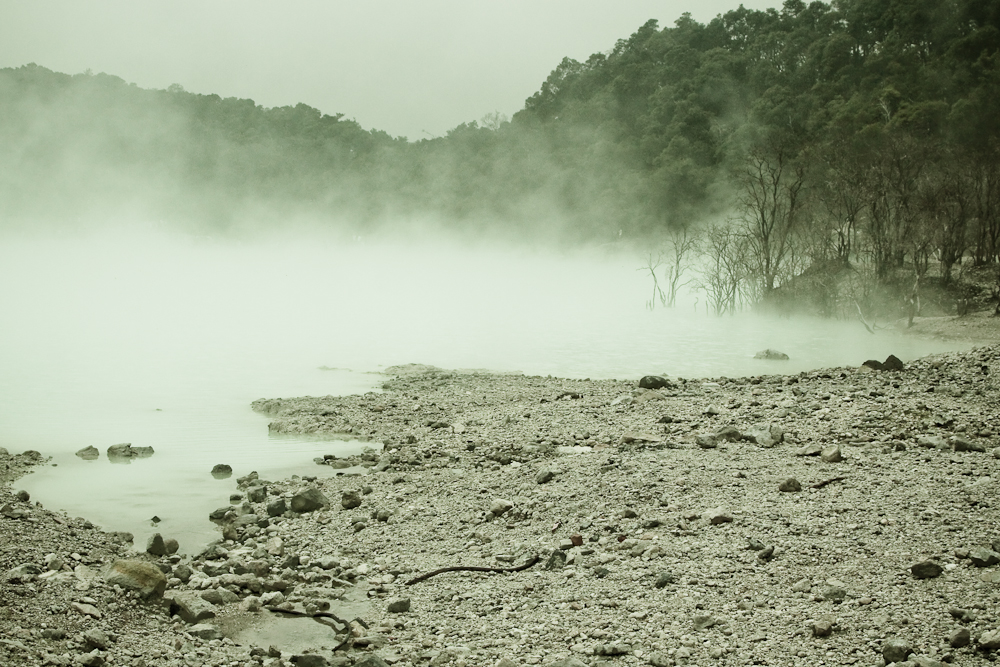

Around one and a half hour from Bandung, is one of the tourists destinations. It is a massive crater on the foot of Mount Patuha, famously known as Kawah Putih or The White Crater. It takes ten to fifteen minutes of heavy uphill driving to reach the spot from the entrance gate. Sometimes there’s this thick white fog and patches of damaged tarmac that can be very challenging, and to some extent, prove fatal if not dealt with carefully. But the reward, the feeling after reaching it, is nothing less than transcendental.
Before you see the thing itself, you get to smell the strong odor of its sulfur-rich air first. It is as if introducing to your brain that you’re about to enter an out-of-the-ordinary world. Because as you descend via the stairs, no matter how many times you’ve been here before, you will always be dumbstruck with the beauty–a wholly, radically different meaning of it–of the colossal cliffs bordering the crater, of the immense white-green patches of moist soil and light-gray rocks, of the shriveling trees that stand heroically grandeur in spite (or because?) of their shape, of the lush red-green shrubbery that amazingly thrives on places where all else seem to fail, of the strokes of mist that dance chaotically like pieces of silk in the whispering wind.
But the wildest astonishment comes more often than not from the crater itself. Its face is constantly morphing: Today its contour is like this; tomorrow it may be different. In times of drought, you can see its isolated pools: some tiny and calm, some large, even seething and bubbly, trapped amidst the snow-colored desert. Then, when the rainy season stretches for months on end, every single pool bleeds excessively, ravishing the rocks, claiming the borders between the dry and the watery, and sets them anew. They all merge into one big mass of mountain-sea. And greatness is written all over it.
Quoted from orientaltales.com